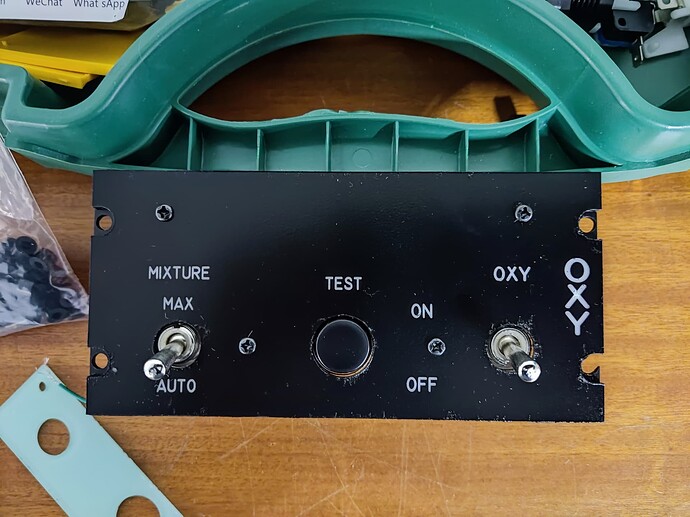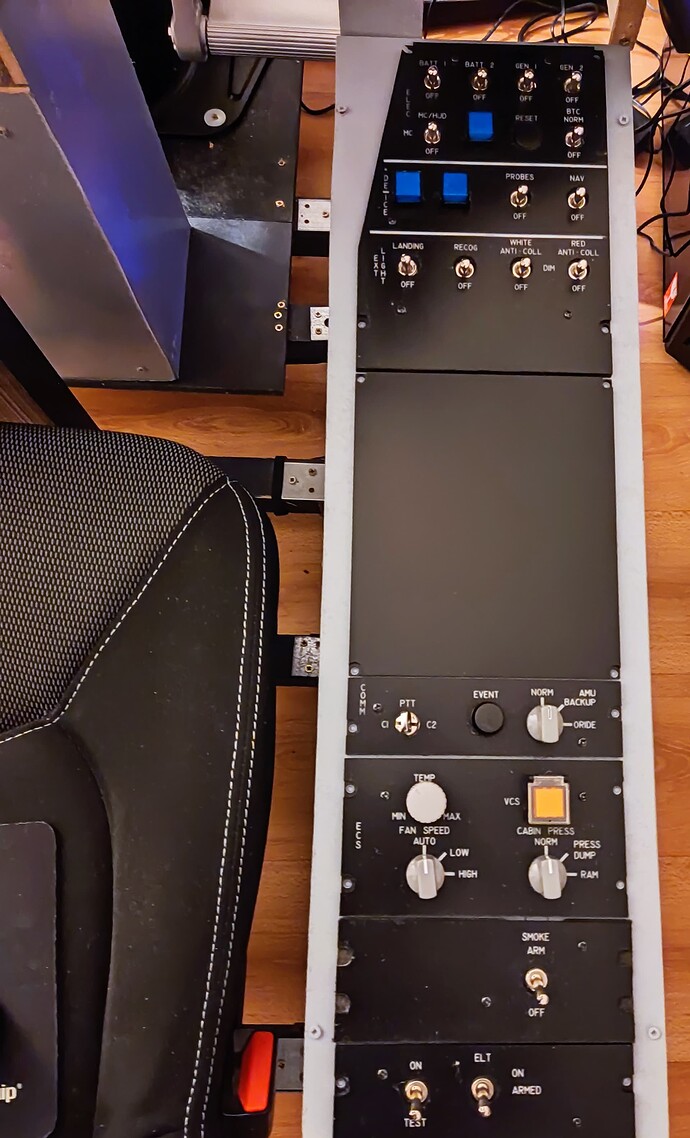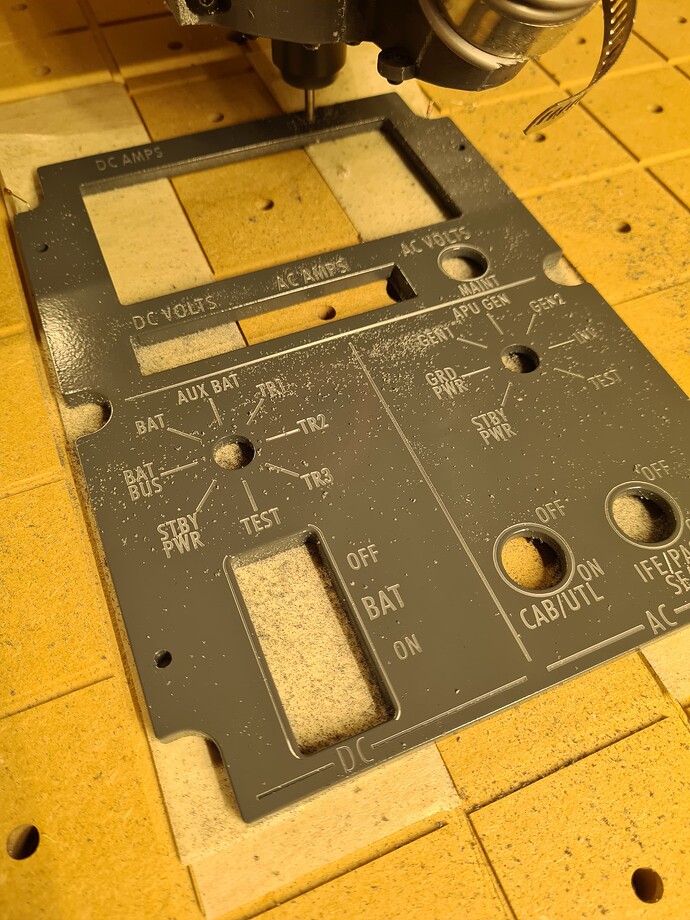Has anyone got any top tips for making backlit panels? I’m working on a project now but I’m not sure if it will be as effective as I want.
I have a couple of throttles from Throttletek which have back lighting, and the way they do is to make the panels (in fact, the whole structure of the throttle) in clear acrylic and then paint it and (I presume) laser-etch text into it. From having scratched one of the panels (in a part I’m getting rid of) I can see that it’s clear acrylic, with a white undercoat, and then the final colour sprayed on top of that. The lettering is white where the undercoat has been exposed with the laser. Then they have dug out small pits in the back of the panel and placed micro-LEDs inside the pits, so they shine light through the material as a light pipe. This seems to work quite well; you require several LEDs per panel but that’s not a big deal.
(I can’t post picture of this as Throttletek require you not to in their T&C - I think they don’t want their control mechanisms getting out to competitors, which is fair enough.)
I don’t have the capability to laser-etch lettering into panels and I’m not about to buy a laser cutter just for that, so I’m planning to follow the Throttletek method in terms of a white base coat, black top coat (but not on the front face which will remain white), and use embedded LEDs for the lighting; but then use the ‘laser transparency’ method on top of that: basically, print a 1:1 image of the panel in black & white on self-adhesive laser transparency paper, layer it two or three times, and stick it to the white-painted front of the panel. The idea being that the lighting shows through the white (which prints transparent) areas on the print, and the black blocks light from elsewhere. And then I put a final layer which is printed on regular thin self-adhesive paper stock, which is full colour with text in white, and the light shines through that. Then you put lacquer on top of that to seal it all.
I’m aware that there are many ways to skin a cat so I wanted to ask this community if there are any backlit panel builders out there, and if so, how you’ve done it.




















